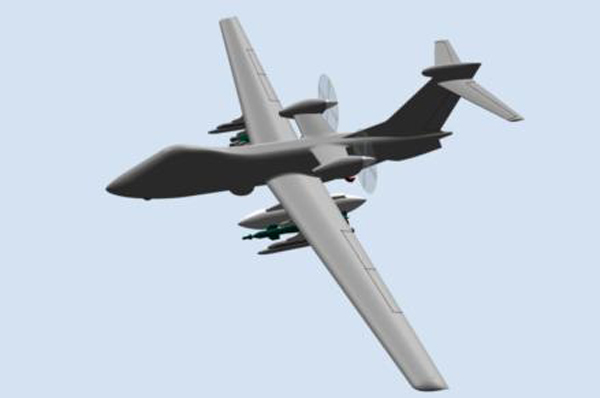One of the flagship programmes underpinning the ambitious Franco-British effort to establish a 50-year strategic partnership in national security is several steps closer to being clarified.
France and the U.K. have committed to jointly address their medium-, long-endurance unmanned aircraft (MALE) requirement under the new defence agreement that was formulated in November 2010. But much of the programme’s success will hinge on devising combined requirements and a cohesive acquisition strategy. Progress on both fronts is being made, and a definitive shape is likely in the next few months.
The French defence procurement agency, DGA, has already dispatched a cadre to Abbey Wood, home of the U.K. Defence Ministry’s defence equipment and support organization, to help run the project. The detailed acquisition strategy is now being defined.
Many industry officials in Europe are eagerly anticipating the outcome, but probably none more so than BAE Systems and Dassault—they have agreed to jointly pursue the programme. Others, such as Thales, are still pondering a commitment and EADS Cassidian is mulling over building a proposal featuring its Talarion unmanned aircraft concept.
While BAE Systems and Dassault have agreed on the broad outline, details are closely coupled to the requirements document. Although the two national prime contractors appear strange bedfellows, Ian Fairclough, project director for strategic unmanned aerial systems (UAS) programmes at BAE Systems, argues that the two firms offer “complementary capabilities.” Fairclough suggests that open competition and a sole-source approach to the Franco-British industrial partnership are under consideration; European competition rules could influence the outcome.
Regardless of what course is taken, Fairclough argues, there are benefits to moving quickly beyond just preserving the notional 2015-20 fielding agenda. A prolonged competitive process jeopardizes design engineering skills, which would otherwise be idle during that time. Detailed programme definition between the partners is still being worked out. What is less clear is how specific that document will be and whether it will be sufficient to begin detailed design activity. One matter still under discussion is whether the system would have to be certified to civil requirements, which would ease operations in civil airspace but add complexity and cost.
Industry also is waiting for word from both governments over their preference for final assembly.
The current plan calls for BAE Systems to be responsible for defining the aircraft and engine selection—turbofans and turboprops are still in the mix—while Dassault would focus on systems integration and testing, Eric Trappier, executive vice president/international at Dassault Aviation, said recently. The concept would be an evolution of the Mantis flying demonstrator developed by BAE Systems. Many details, though, remain undetermined, including how many air vehicles will be featured in each system.
Another decision revolves around devising an exportable system. The two countries “would like to minimize ITAR content,” Fairclough says of equipment governed by the complex U.S. International Transfer of Arms Regulations. The air vehicle would be designed to be able to both target and deliver ordnance. Cost estimates vary for the programme. Some put the development/production bill at €1 billion ($1.4 billion), which would be shared equally, although a U.K. defence ministry document cites a £2 billion ($3.2 billion) life-cycle cost for the U.K. alone. That assumes around 20 aircraft, although no number has been set.
For the U.K., the programme would take on much of the requirement of the so-called Scavenger UAS requirement, although it remains uncertain whether all aspects would be covered by the Franco-British effort. The U.K.’s UAS document, developed by the defense ministry’s doctrine center, suggests “the U.K. will consider if other complementary components are needed to fully satisfy the U.K. capability requirement.”
Although the programme is bilateral, so far, Dassault’s Yves Robins, a counsellor to Trappier, says that if the two governments change course, industry would adapt.
Source: Aviation Week

